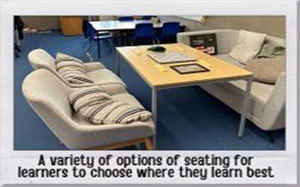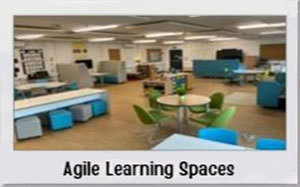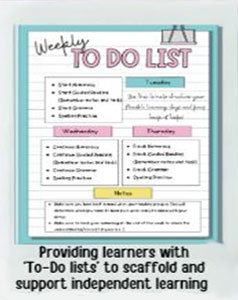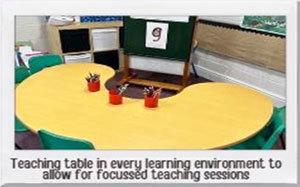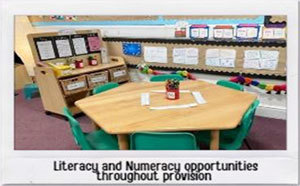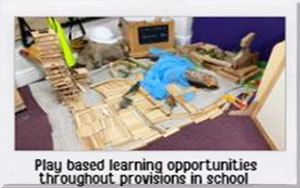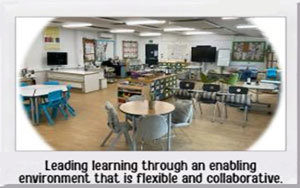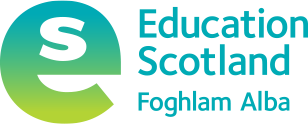Promoting children’s independent learning at Cramond Primary School
Cramond Primary School is a non-denominational school with a nursery class. It serves the village of Cramond and the surrounding areas of northwest Edinburgh. There are 461 children attending the school. Most children live in Scottish Index of Multiple Deprivation areas 9 and 10. Around one third of children have additional support needs or require help to make progress in their learning.
The improvement issue
Senior leaders recognised that they needed to make improvements so that the children could take a more active role in leading their learning. Senior leaders and staff identified the need to create effective routines, learning structures and an improved learning environment to support improved outcomes for children. Staff also wanted to develop their use of digital technology to help improve learning and teaching.
What Cramond Primary did
Senior leaders and staff looked critically at the indoor and outdoor learning environments. They drew on emerging best practice in play pedagogy and enquiry-led learning to inform improvements. The made changes to how they organised learning and teaching, including creating more flexible seating areas within classrooms. They also linked with businesses to access surplus office furniture to create more agile learning spaces. These new and improved spaces are helping to promote more open-ended play/learning opportunities the children. Children are benefiting from having more choice about where they work within the classroom and in how and when they complete tasks. These improved learning environments are successfully supporting children to work alone, in pairs and in groups and to develop their critical thinking.
Staff have worked on creating a rich learning environment in the playground, which mirrors the expected quality of provision indoors. ‘Our place’ is a natural outdoor play space used by the community beyond the school day. It is helping to inspire learning in the classroom and ensures that all children are ready to learn after positive, active playtimes.
Staff have created a planning for learning and teaching framework. Within the framework, teachers have increased autonomy in organising and managing their own learning tasks. Children working at second level are taught how to use workflow tools such as calendar, to do lists, reminders and digital channels to organise and lead their own learning.
Protected collegiate planning time has been allocated within the working time agreement. This enables teachers to engage in professional dialogue with stage partners, sharing good practice and moderating learning and teaching. School staff have engaged in a range of professional learning opportunities and research, including nurturing practice and play based pedagogy. Staff use new knowledge to inform their next steps to improve the overall quality of learning, teaching and assessment.
Staff provide support for all children through the implementation of the school's ‘relationships for learning’ protocol. Staff have created calm spaces to support children to self-regulate. The enhanced provision, ‘The Nest’, is a nurture space that children can attend to receive support to manage anxiety or emotions at school. The creative use of outdoor space, including nurture forest provision with the sustainability lead, helps the staff to increase pupil engagement and inclusion. All staff use restorative approaches consistently to support children to resolve issues.
Implementation of the agreed learning framework is helping to provide more consistency across all classrooms. Teaching staff are making good use of teaching tables when working with groups of children. This is helping teachers to give better feedback to children and to gather in the moment assessment information. Children are more engaged in the differentiated learning that teachers are able to give as a result and which has a clearer focus on the development of skills.
Staff are supporting children to use technology successfully to report, research, create and share their learning with others. Staff plan independent learning sessions where children have choice in how and when they complete tasks set by teachers.
What the sustained impact has been
Children’s levels of engagement, attendance and attainment have increased. Children are more skilled in working independently, in groups and with mixed ages. They are articulate in making their thoughts more visible, organising their time better, and building on their previous experiences. Children are increasingly more active in leading their learning. Learning environments are more planned to empower children to lead their own learning and exercise choice in approaches to learning. This is supporting increased personalisation and choice for children to engage in their learning. As a result, almost all children are developing as self-motivated and reflective learners who are taking a more active role in leading their learning.
Senior leaders have given staff increased autonomy with the learning framework. They are now able to use it in a way which best suits their personal style and the needs of current cohort of children. There is more consistency across organising and planning for learning, teaching, and assessment, and stronger relationships between staff and children. At second level, children have 1:1 digital devices. This is increasing their autonomy to organise and lead their own learning. Children in P7 have a more flexible approach to their learning week. They are taking increasing responsibility to organise their own learning. They are accountable for how and when they complete tasks. They use digital platforms successfully to sharing their learning with others.
All staff use digital platforms well as a learning and teaching tool across all stages. Digital learning journals record children’s personal profile of achievements across the year, alongside an illustration of learning highlights. Other experiences, including children’s wider achievements that link to skills development and curriculum are also captured.
Families are engaging well with their children’s learning and are sharing news from home. Staff are more systematically recording children’s out of school achievements and sharing within the school, for example at assemblies. Teachers and children review and discuss learning journals regularly. This supports children to recognise the progress they have made and plan next steps for learning.
Feedback from children, alongside attainment and attendance data, shows that these approaches are having a positive impact. Health and wellbeing data indicates that almost all children feel safe, happy, and actively involved in decision making. Staff also report favourably on the impact on their own wellbeing, with increased opportunities to spend quality time with groups of children. This is helping to maximise individual progress and build positive relationships with children. Classes are more calm, purposeful and nurturing with high level of active engagement by children.
Children across the school are benefiting from a more purposeful and calm start to the school day through the ‘Launching Learning’ approach. This approach provides children with opportunities to develop meta-skills and revisit previously learned concepts.
‘Launching Learning’ is offered as a nurture-based approach across all classes to support children to transition successfully into school. This approach ensures learning starts from when the school doors open. Teachers plan high-quality experiences that are supporting children well to develop meta-skills and revisit previously learned concepts. Children have ownership and choice of their learning tasks. Staff use this time well to interact, ‘check in’ and engage in valuable discussion with each child about their learning. This is helping to set the learning climate for the day ahead.
‘Flexible Learning at Cramond Primary School has evolved in the last few years. Teachers are skilfully adapting learning and teaching to best suit the needs of children. Children are active participants with authentic opportunities to make learning meaningful, relevant and purposeful. Children are able to lead their own learning and there are many opportunities for them to make learning personal to their interests. As a class teacher, establishing flexible learning in P7 after the pandemic allowed me to take advantage of children already being accustomed to using timetables, to-do lists and prepared resources to play a more active role in organising their learning timetable. We then used this build on ensuring teacher time was used to teach small groups and provide children with more ownership of their time and their learning. We have used our knowledge of the play-based pedagogy and adapted this to ensure children engage with open ended learning opportunities. There is a strong focus on skills-based learning. Our teachers can identify key skills being taught when planning and therefore children are fully aware of skills they are learning.’
Principal Teacher
‘Working in a flexible learning environment and equipping children with the independence and resilience to lead learning in their classroom has completely transformed my practice. Using digital technology to help organise, distribute, and prepare resources has been invaluable and is preparing children, not only with the skills for life and work, but also creating learners who are inquisitive, engaged, independent and who are empowered to use their voice to lead learning.
Organisationally, the use of timetables, calendars, folders, and electronic platforms has not only helped my practice but also benefitted all children in preparing, scheduling and organising their own week. Having multiple skills-based learning tasks to complete throughout the week has helped with the appropriate pace and challenge to continue throughout the week. Within classes pupils have the opportunity to choose appropriate challenge level tasks and often have the opportunity to lead and choose how these are presented. This practice is something I will aim to replicate and utilise, in an age and stage appropriate manner, with all ages of children.’
P7 Class Teacher
Flexible learning at Cramond Primary School
